Chinese anti-ship missiles. Part 2
Before the beginning of the normalization of relations between the USSR and the PRC in the late-80's military-technical cooperation is practically absent between the two countries, and in China were forced to modernize old Soviet missiles and copying Western models. This was facilitated by the convergence of the positions of the PRC and the "democratic Western countries" led by the United States, who decided to be friends against the Soviet Union. As a result, for a short period of time, ended after the crackdown in Tiananmen Square, the Chinese were able to access some Western models of weapons and technologies. The fact that it was impossible to buy legally, often managed to get the Chinese intelligence. It is worth noting that China will never bother moral and ethical standards and compliance issues of copyright or license rights when playing samples of weapons or their components.
The result of access to Western technology was adopted in 80-90-ies of the Air Force and Navy of the PLA range missiles, which appearance and their characteristics were close to the French and American models.
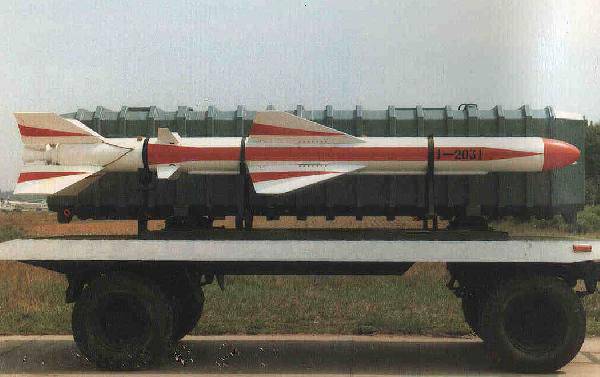
In the second half 80-x in China has begun mass production of RCC YJ-8 (C-801). Since 1987, the YJ-8 began to come into service modernized Chinese frigates forth. 053H2. This rocket in appearance is strikingly different from the previous, more similar to airplanes, the Chinese anti-ship missiles, and its weight and size, and combat characteristics YJ-8 strongly resembled the French RCC Exocet. The Chinese rocket also used a solid-fuel engine. The launch range of the YJ-8 is a little over 40 km.
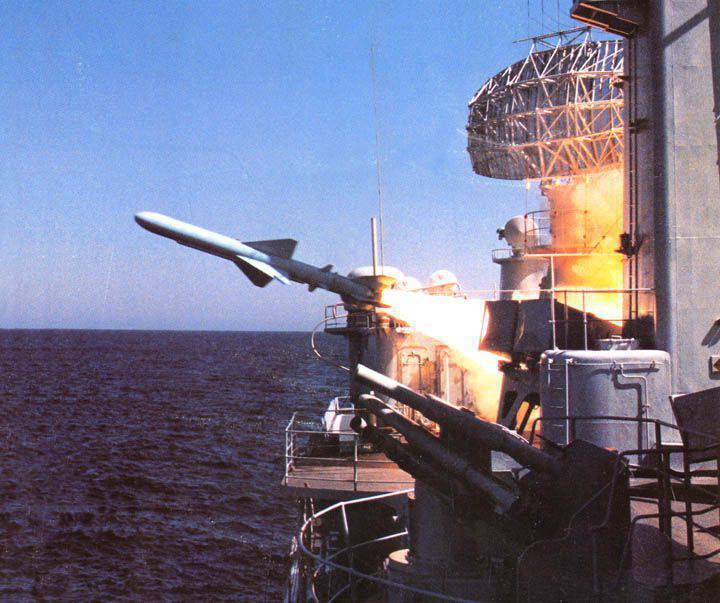
Creating and launching into production RCC YJ-8 (C-801) was the great achievement of the Chinese military science and industry. The rocket entered service with the PLA Navy just nine years after the adoption of the French anti-ship missile system Exocet.
Aviation the variant intended for arming JH-7 and H-6 aircraft received the designation - YJ-8K. A few years after entering the armament of anti-ship missiles placed in the above-deck launch containers, a rocket with a folding wing, YJ-8Q, which could be launched from torpedo tubes in submerged submarines, was tested and adopted. All modifications of the YJ-8 missiles have an active impulse seeker. On the marching section of the trajectory, the flight of the rocket takes place at an altitude of 20-30 meters, when approaching the target, it decreases to a height of 5-7 meters. A missile hits an attacked ship, striking at sea level.
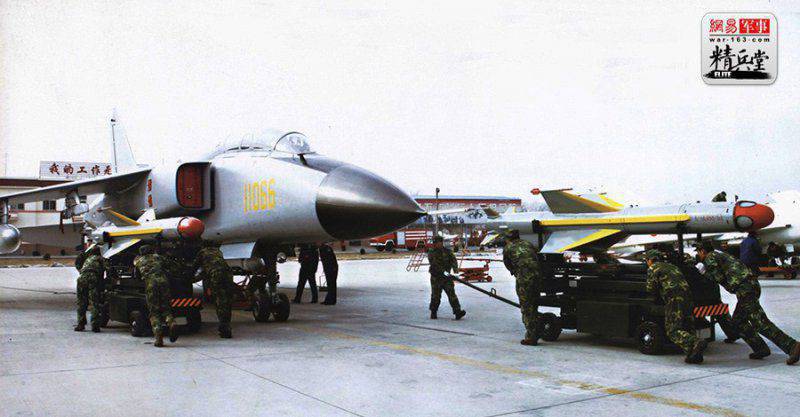
In addition to the version with active radar seeker to defeat a variety of purposes on the basis of YJ-8 created variants with heat, semi-active radar guidance system or television. Aviation version of the rocket with a combined television and IR GOS is known as KD-88.
In the future, the design of the anti-ship missiles YJ-8 became the base for other more advanced Chinese missiles. Improved solid fuel YJ-81 can hit targets at a distance of more than 60 km.
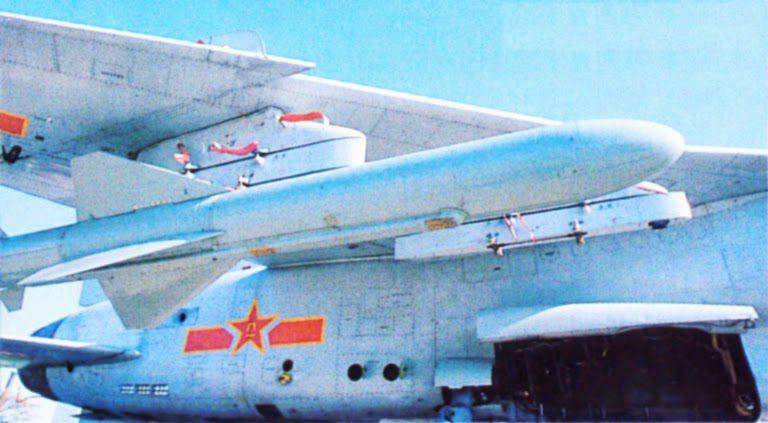
However, a solid propellant jet engine, with all its many merits, is not capable of providing greater flight range. Therefore, the PRC was created RCC YJ-82 (C-802) with a turbojet engine. Mass missile while increased slightly, and increased body diameter. The launch of the YJ-82 takes place with the help of a separating solid-fuel starting accelerator. Starting range YJ-82 compared to YJ-81 has doubled.
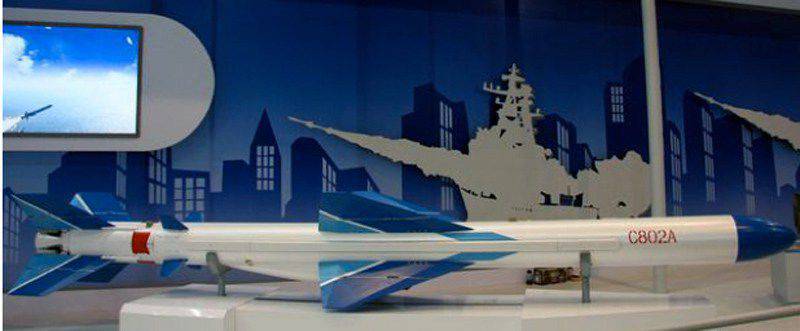
The rocket has an improved control system. The flight altitude on the cruising flight segment is reduced to 10-20 meters, depending on the state of the sea surface. At a distance of several kilometers from the target, the height drops to 3-5 meters. In the immediate vicinity of the target, the rocket slides down and strikes with a dive, aiming below the waterline.
Armor-explosive warhead weight 165 kg, which undermine is delayed, capable of causing severe damage to the vehicle class destroyer. According to its characteristics of RCC YJ-82 in many respects similar to the American RGM-84 Harpoon, but the Chinese missile appeared to 17 years later.
Even more perfect model became RCC YJ-83 (C-803), first shown to the public in 1999 year. The use of this rocket more economical turbojet possible to increase the range of start-up to 180 km for the aviation version of KD-88 the figure is 250 km. Weight of the missile is increased up to 185 kg.
According to Chinese sources YJ-83 RCC applied Interference radar seeker with a wide field scan which is intended to increase resistance to active and passive noise and increase the probability of hitting a target. Midcourse, along with an inertial system uses satellite navigation and flight height is controlled by a laser altimeter. These same Chinese sources claim that shortly before hitting the target missile at supersonic speed increases, but, looking at the shape of the head of the YJ-83, justifiable doubts arise in this.
Missiles family YJ-8 became widespread in the Navy PLA their armed submarines, destroyers, frigate, missile launches, bomber JH-7 and H-6, fighter J-15 and J-10 and JF-17, and patrol aircraft Y-8J. RCC YJ-8 and YJ-82 widely exported, they are in the armed forces of Algeria, North Korea, Iran, Indonesia, Myanmar, Thailand, Pakistan and Syria. In Iran, with the help of Chinese experts established its own production of anti-ship missiles YJ-82, which received the name "Nur".
Another anti-ship missile, which he said in the guise of a rapprochement with Western countries in 80-ies became YJ-7 (C-701). This lightweight RCC closely follows US aircraft missiles AGM-65 Maverick, designed to destroy ground targets with tactical aircraft and carrier-based aircraft.
But unlike the American prototype of Chinese missiles and aircraft except helicopters it can be used with portable launchers mounted on light boats and automobile chassis. First Modification YJ-7 IR TGS at the starting weight - 117 kg and flight distance - 25 km carried warhead weight - 29 kg. Rocket flight speed - 0,8М.
In the 2008 7 year-m Zhuhai Air Show was first demonstrated YJ-73 (C-703) with radar homing millimeter range. After it appeared YJ-74 missile (C-704) and YJ-75 (C-705) with the television and radar seeker centimeter range. Launch range of these modifications increased to 35 km. RCC YJ-75KD equipped with a miniature jet engine, which increased flight range of up to 110 km. Correction of the rocket course until the target is captured by the guidance system occurs according to signals from the satellite positioning system. In addition to fighting surface ships, YJ-75KD can be used to destroy ground targets.
The YJ-7 rockets were shipped to Iran, from where they fell into the hands of Hezbollah militants. During the Lebanon War 2006 years 7 missile YJ-Chinese origin was attacked by an Israeli corvette Hanit. The ship was damaged, but remained afloat and four crew members were killed.
In March 2011, Israeli warships in 200 miles off the coast of Israel stopped to check the cargo vessel "Victoria", follow under the Liberian flag from the Syrian port of Latakia to the Egyptian Alexandria. During the inspection by Israeli commandos on board was discovered cargo weapons and ammunition weighing about 50 tons, hidden under a load of cotton and lentils.
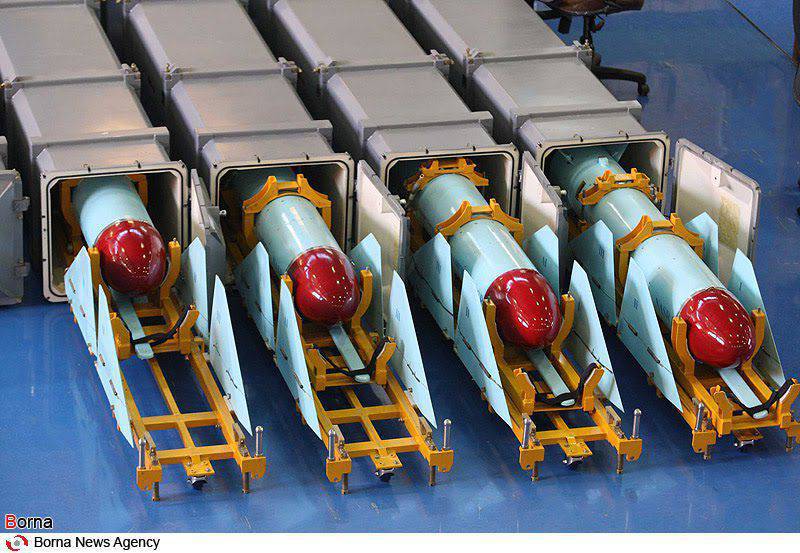
Under escort "Victoria" was sent to the Israeli port of Ashdot, where the smuggled cargo was unloaded. Among other things, during the inspection found six RCC YJ-74 in transport-launch containers and two guidance system station. In addition to Iran, the YJ-7 series missiles were shipped to Bangladesh, Syria, Egypt and Indonesia.
In the 2004 in the PRC has been demonstrated by rocket TL-6, intended for weapons of small patrol boats and helicopters. Apparently, the prototype of the Chinese anti-ship missile was easy AS.15TT French Aerospatiale. A solid propellant missile launch range 35 km, assumes 30 kg armor-explosive warhead.
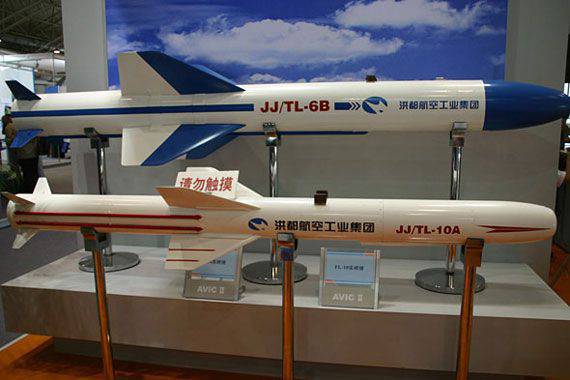
The TL-6 CRP is equipped with an active radar seeker. According to the Chinese military, these relatively compact and inexpensive missiles are better suited for hitting ships with a displacement of up to 1000 tons and counteracting amphibious operations in the coastal zone. A known variant of the TL-10 with a television or IR GOS, this more compact, but structurally similar to the TL-6 rocket is designed to combat boats. For the coastal complexes, the FL-9 rocket was created, regarded as an inexpensive alternative to the YJ-82. It is known that in addition to the PLA Navy, missiles of this model range are available in Iran. In December 2008, the Iranian Navy successfully tested the Nasr-1 RCC, which is believed to be based on the Chinese TL-6.
In the 90-2000 years, several hundred anti-ship missiles 3M-80E (Mosquito), 3M54EXNNXX (Club-S), X-1, and about two thousand X-31T were delivered to China from Russia. The launch range of the X-29T with the 29 kg warhead is about 317 km, and it is intended mainly to defeat fortified land targets. But if necessary, this rocket can also be used for naval targets such as tankers, amphibious or transport ships, as was the case during the Iran-Iraq war.

In the 90-e years in China, work was carried out on supersonic anti-ship missiles with a direct-flow engine and a liquid-jet engine. But after the purchase of Russian-made missiles, most of these works were curtailed in the absence of prospects. It is quite natural that Chinese specialists, having familiarized themselves with modern Russian rockets, surpassing their characteristics in Chinese developments, took steps to copy them.
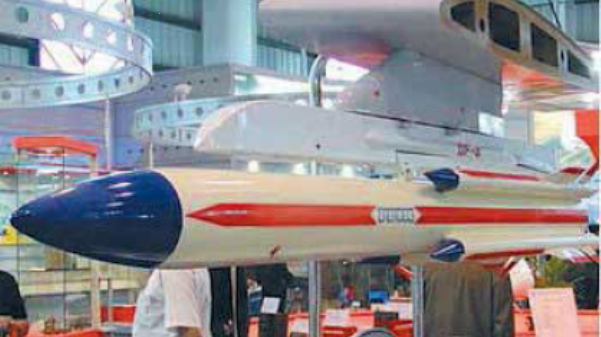
Soon after the delivery of the Russian X-31 missiles to the People's Republic of China, the Chinese aviation anti-ship missile YJ-91 saw the light. Rocket weighing about 600 kg developed in two versions: anti-ship and anti-radar. These options differ in the guidance system, launch range and weight of the warhead.
According to its characteristics, the YJ-91 is close to the Russian X-31 rocket, but the range of its launch in the anti-ship version does not exceed 50 km. According to Chinese sources, the carriers of YJ-91 are the most modern Chinese fighter-bombers JH-7А, fighter J-15 and J-16. It is reported that work is underway to create a modification of anti-ship missiles YJ-91.
In 2015, there were photos of the YJ-12 rocket suspended under the H-6D bomber. Outwardly, this rocket resembles the Russian X-31 rocket increased in size. The length of the YJ-12 is approximately - 7 meters, diameter - 600 mm, weight - 2500 kg. There is no information about the YJ-12 guidance system, but, most likely, it uses active radar seeker.
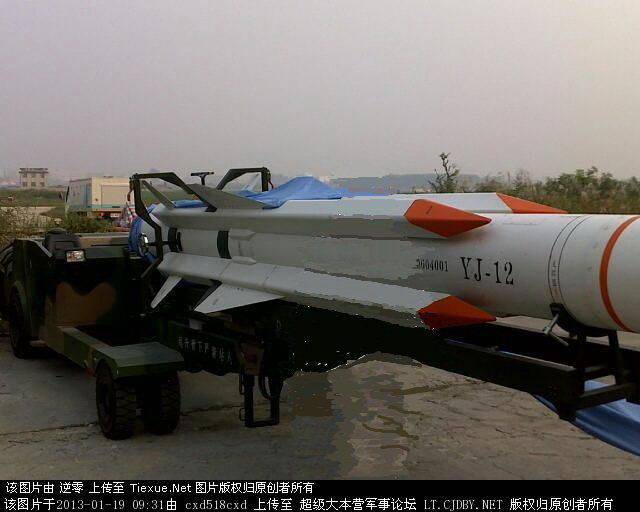
According to the authors of the publication United States Naval War College Review rocket YJ-12 capable of hitting surface targets at a distance of more than 300 km. At the same time it is equipped with a warhead weighing about 300 kg. It is believed that at speeds of around 2,5, these missiles will pose a deadly threat to US warships for mass use. It is assumed that in addition to the long-range bombers H-6, it will become part of the armament of the J-15 and J-16 aircraft.
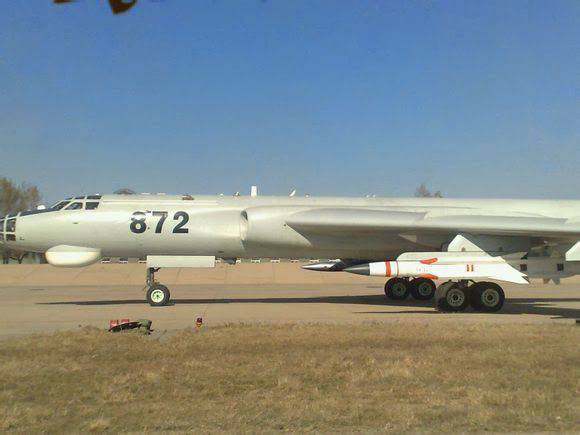
After the collapse of the USSR, Chinese specialists had the opportunity to become acquainted with many promising Soviet developments. Natural samples of strategic cruise missiles X-55 and a set of documentation were obtained through Ukraine. At the beginning of the 2000-x in China, its own cruise missile of a similar purpose entered for testing. As noted in the English-language publications, the “source of inspiration” of the Chinese designers could be not only the Soviet X-55, but also the American BGM-109 Tomahawk, whose unexploded samples were taken by the PRC intelligence from Iraq.
The anti-shipping variant of the Chinese KR, first demonstrated in 2005, was designated as YJ-62 (C-602). This rather large subsonic rocket is designed to be placed on destroyers and wheeled chassis of coastal complexes; long-range H-6 bombers also became their carriers. Deliveries of a truncated export option for coastal missile systems were conducted to Iran, the DPRK and Pakistan. In the export version of the C-602, the launch range does not exceed 280 km.
An article published in the Joint Forces Quarterly edition in September 2014 of the year states that the launch range of the upgraded YJ-62 rocket has been extended to 400 km. The course correction in the flight portion of the flight is performed by the inertial autopilot and the satellite navigation system. RCC YJ-62 is equipped with a data transmission line and is capable of receiving target designation from reconnaissance aircraft in flight and, if necessary, can carry out selection and redistribution of targets for salvo application.
An active radar homing device is used to guide the missile at the target. In order to increase noise immunity in the conditions of electronic countermeasures, the homing head can quickly change the frequency of the radiation according to an arbitrary law. The YJ-62 missiles can be equipped with various warheads (including nuclear ones). The most common option is penetrating warheads weighing 300 kg.
Perhaps the most modern anti-ship missiles adopted by the Chinese fleet, can be considered - YJ-18. There is very little information about this rocket, since it has never been exhibited at international aerospace salons, and is not offered to foreign buyers. According to American naval analysts, when constructing the YJ-18 anti-ship missile, the constructive and technical solutions of the Russian 3M-54 Klub missile were used and it is capable of ensuring the defeat of surface ships of all classes in conditions of intense fire resistance and in difficult jamming conditions. In addition to surface targets, this missile can hit ground-based radio contrast targets.
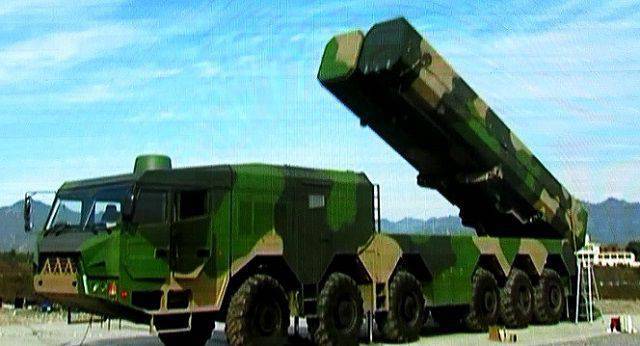
The first was tested version of the missile YJ-18 for coastal missile systems. Missiles are placed in a twin launcher on a six-axle all-terrain automobile chassis. It is assumed that the coastal complex will work in conjunction with a heavy UAV, which should provide reconnaissance and target designation.
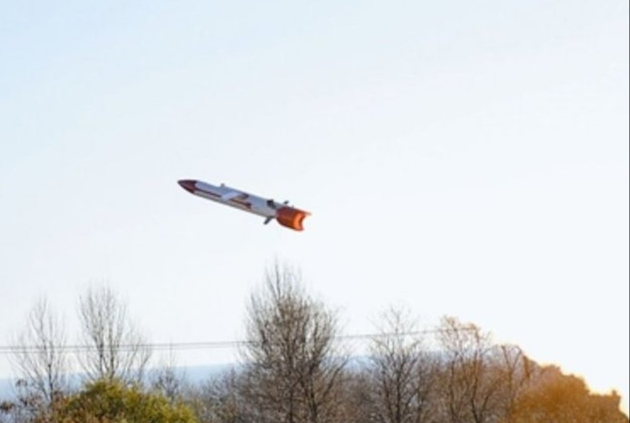
The YJ-18A anti-ship missile with a launch range of up to 500 km, carrying 300 kg warhead, is the “main caliber” of Chinese Idgis destroyers of 52D Ave. It is known that these missiles will also be armed with promising warships of the 55 Ave. Currently undergoing tests RCC YJ-18В, designed to launch from a submarine, which is in the submerged state.
After launching and resetting the launch solid-fuel engine, the rocket goes into horizontal flight. The turbojet engine supports cruising speeds around 0,8M. Apparently for the correction of the course of the rocket when firing at a maximum range, signals from satellite navigation systems or radio command control are used. At a distance of 40 km from the target, the engine switches to the afterburner mode, and the rocket accelerates to speed 2,5-3М. The interception of anti-ship missiles flying at a height of several meters above water at supersonic speeds is a very difficult task. According to the results of the tests, the YK-18 RCC, according to Chinese experts, is “the best in its class”. Apparently, the YJ-18 was compared with other Chinese anti-ship missiles.
At the last 11 on 16 on November 2014, the Zhuhai aerospace show was presented to the general public for the first time by a Chinese anti-ship missile, which received the symbol CX-1 (Chaohun-1). Apparently, the process of testing the CX-1 anti-ship missile, intended for coastal missile systems, is underway. Mobile installation on off-road chassis carries two missiles. In the future, the CX-1 may become part of the armament of large surface ships.
According to the information provided by the Chinese CCTV television channel, supersonic anti-ship missiles, which can reach speeds of more than 3600 km / h, can be used to strike surface and ground targets at a range from 40 to 280 km. However, it is possible that underestimated data are presented in terms of the maximum range, since these figures are below the limitations of the International Regime for the Control of Missile Technology (MTCR). A warhead weighing 260 kg, designed to destroy surface targets, can be armor-piercing high-explosive or fragmentation-high-explosive to destroy ground targets.
Specialists draw attention to the common features of the Chinese CX-1 anti-ship missiles, the Russian P-800 (Onyx) and the Russian-Indian Brahmos missile. It is known that Russia did not transfer the materials and did not deliver these missiles to the PRC. At the same time, deliveries were made to Syria, Indonesia and Vietnam. ” It is quite possible that one of these countries “shared” Russian missiles with China.
Currently, the PRC is developing a wide range of anti-ship missiles and a number of models that are at the design or testing stage are not described in this publication. It should be noted that the Chinese defense industry has a unique and very valuable ability to borrow from foreign samples all the best, taking into account their own production and technological capabilities. One can only guess what the Chinese designers will surprise us in the near future, since the rates of creation and testing of Chinese anti-ship missiles are currently unprecedented and can be compared only with the rates of creation of the USSR rocket and space technology in 50-70-s.
Special mention deserves the increased technical reliability of the Chinese rocket technology in general. So from the experience of hostilities, the coefficient of technical reliability of the Chinese first-generation liquid anti-ship missiles did not exceed - 0,75. At the moment, on test shoots conducted by foreign customers, this parameter has increased to - 0,9. It is clear that in a combat situation, the reliability of the equipment is less, but still the progress in improving the reliability of Chinese missiles has progressed significantly.
At the beginning of the 2000-x of the CPC Central Committee, a course was set for using only domestic materials, components and components in complex defense products. Currently, most rocket armaments already use electronics and 100% software from China. This was due to serious investments in basic research and production and material base.
Today, the Chinese navy is one of the strongest in the world. A qualitative leap in the construction of warships, the creation of modern electronic systems and weapons occurred over some 10 years. If in the 90 and at the beginning of the 2000, China ordered destroyers and diesel submarines in Russia, now our country has only point purchases of naval anti-aircraft systems, and that, for the most part, for the purpose of information and possible copying.
The PLA Navy is currently in a stage of rapid growth and is still far from the qualitative and numerical composition planned by the Chinese leadership. In its current state, the Chinese fleet, which became the ocean, is able to challenge the Navy of any Asian-Pacific country and on an equal footing even without using coast-based anti-ship ballistic missiles DF-21D to withstand the US Navy's 7 fleet on duty in the open ocean. In the very near future, the PLA Navy will be able to form a full-fledged carrier-based strike group for operations at a distance of several thousand nautical miles from its shores.
In order to obtain a qualitative superiority over its main adversary - the US Navy far from its shores, in the PRC, from the middle of the 90-x, the creation of anti-ship missile systems, reconnaissance and target designation equipment is proceeding at an accelerated pace. Judging by the samples shown at international aerospace showrooms supplied to foreign customers and in service with their own fleet, China has achieved considerable success in this area.
Based on:
http://ndupress.ndu.edu/JFQ.aspx
http://flot.com/publications/books/shelf/reddragon/29/?print=Y
http://fas.org/man/dod-101/sys/missile/row/c-201.htm
http://www.360doc.com/content/11/0706/10/3106568_131773395.shtml
http://www.china-defense-mashup.com/2014-zhuhai-airshow
http://chinese-military-aviation.blogspot.ru/p/missiles-iii.html
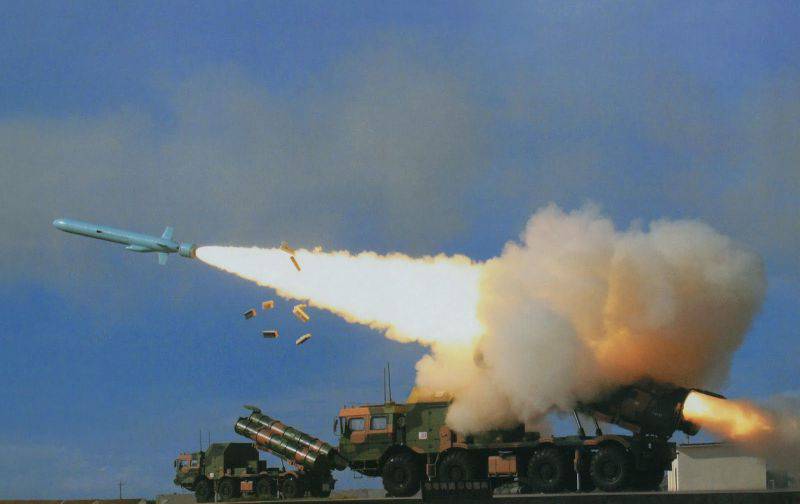
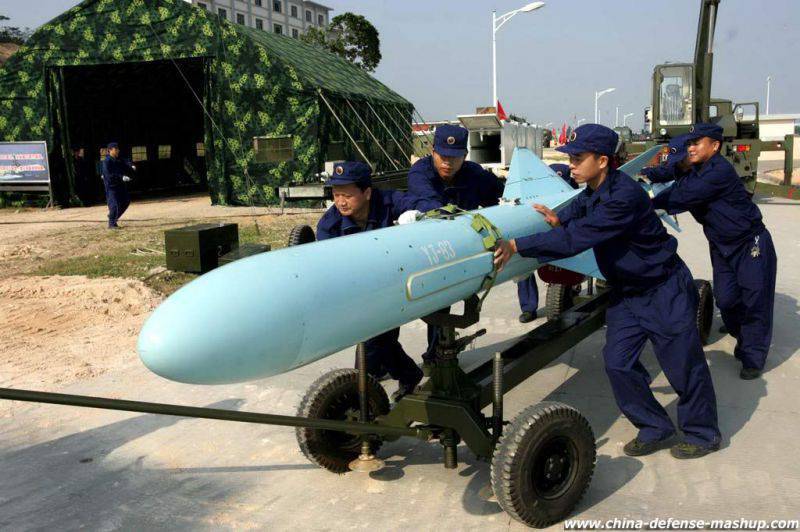
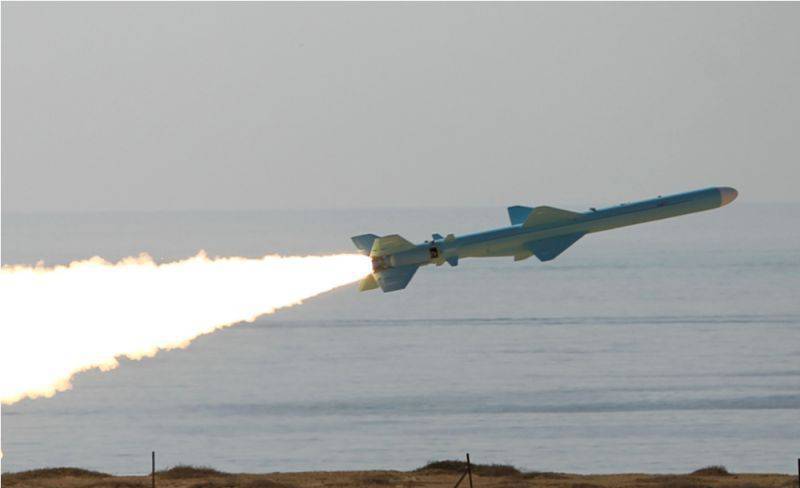
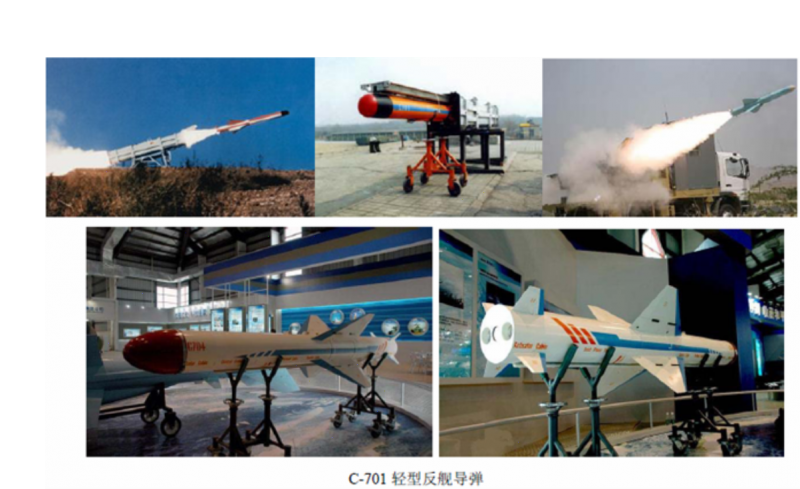
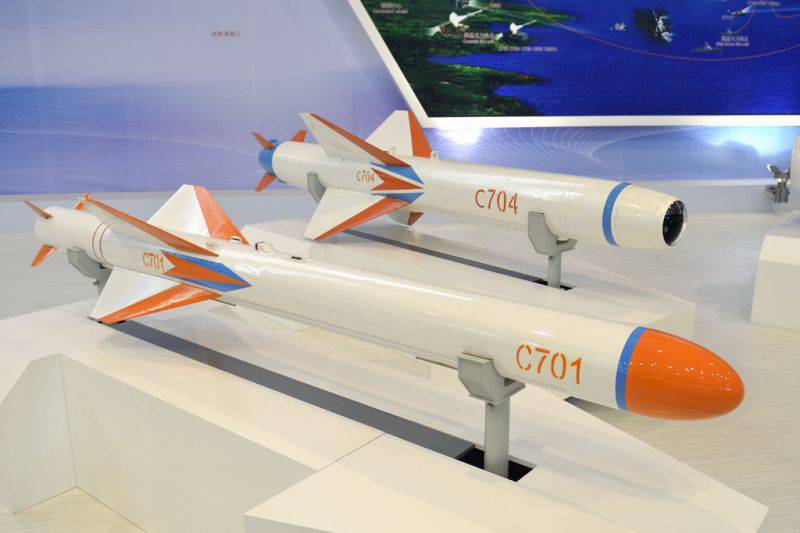
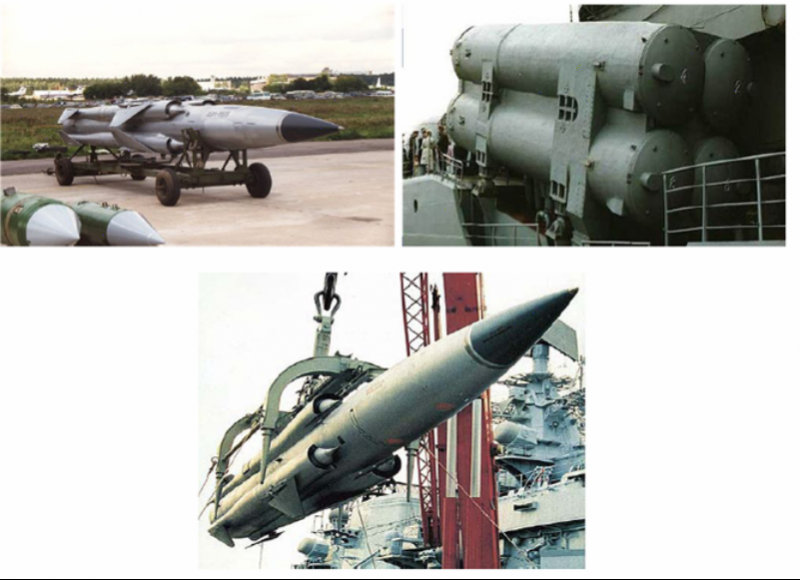
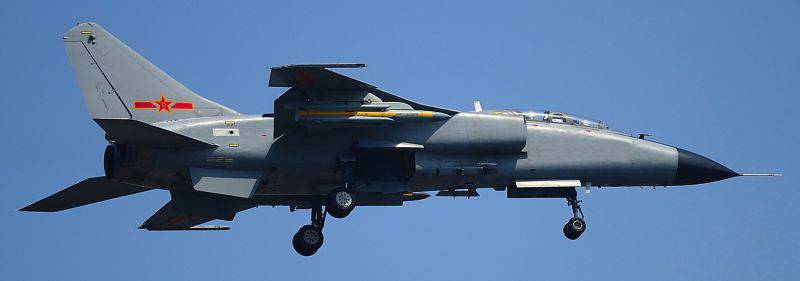
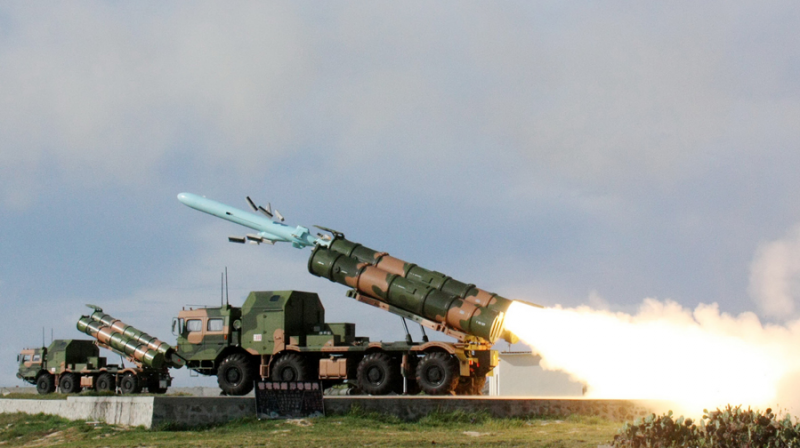
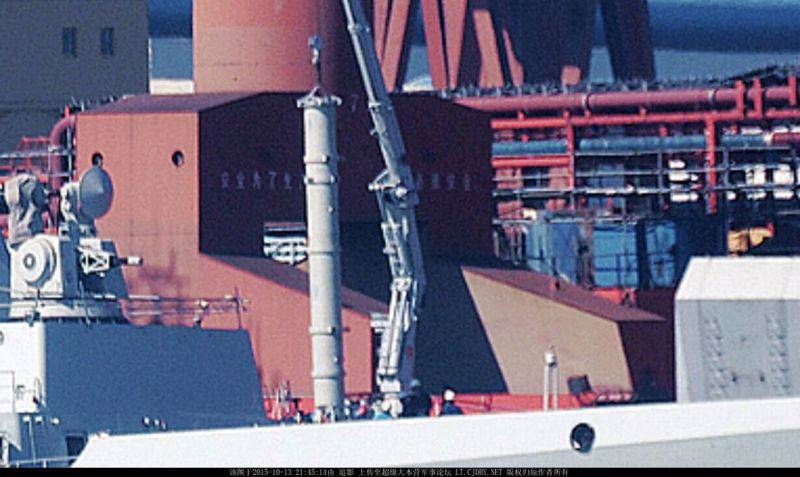
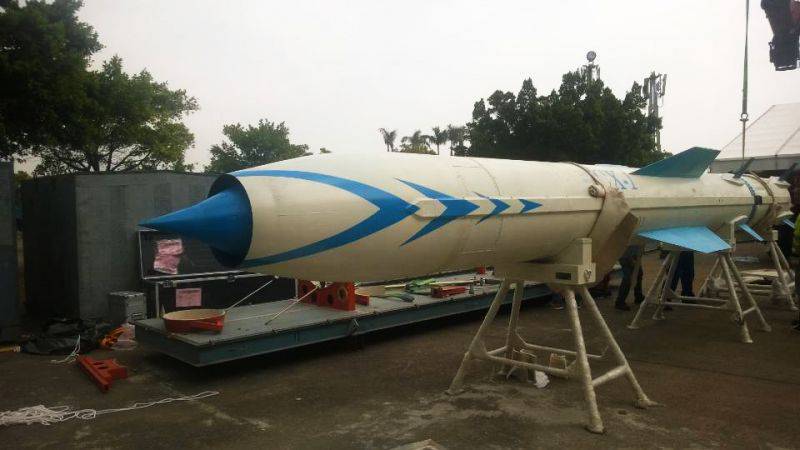
Information